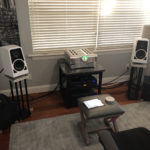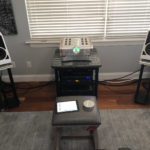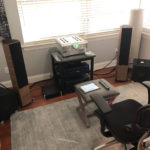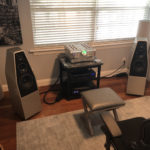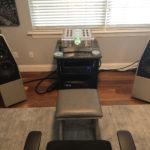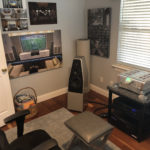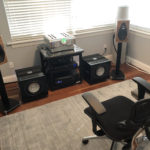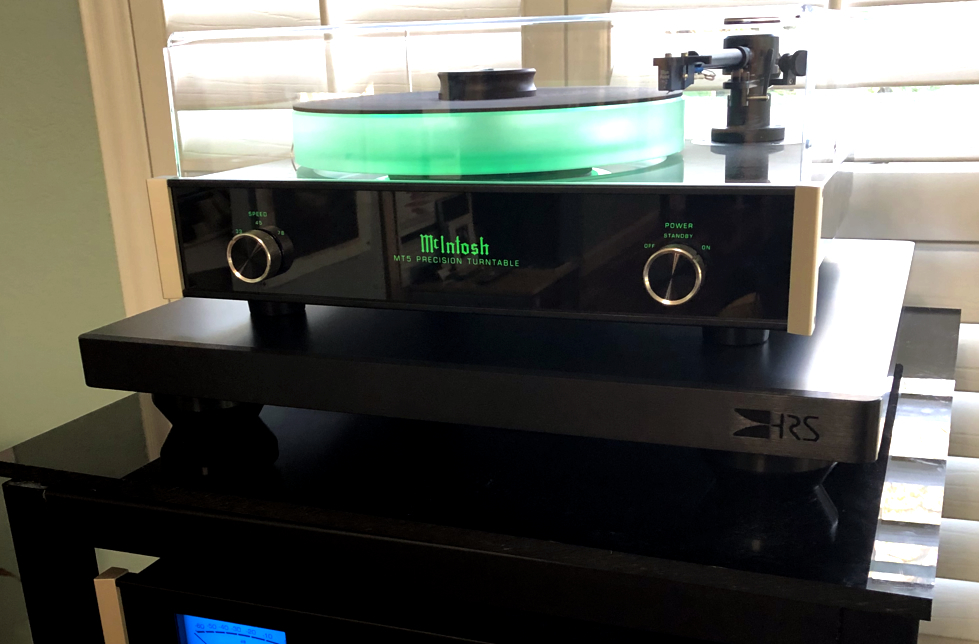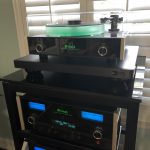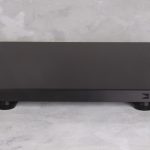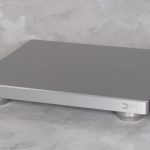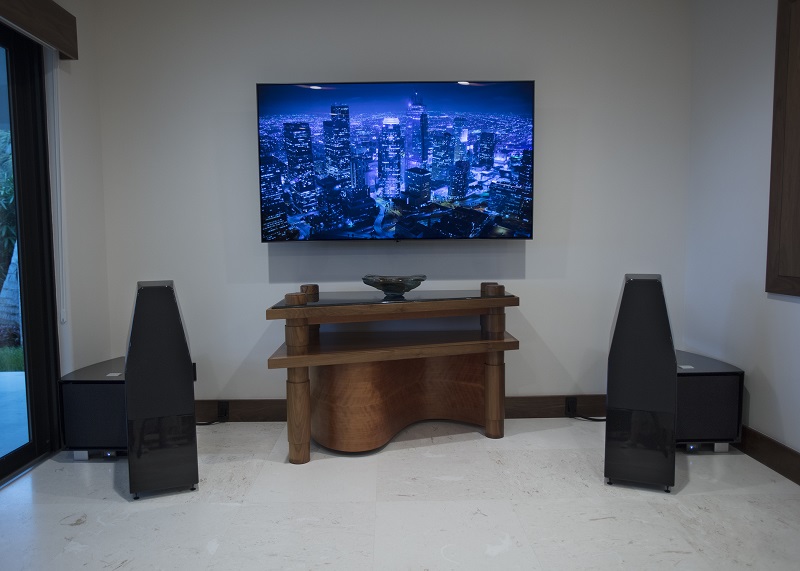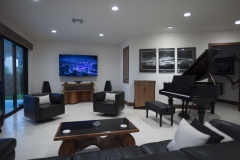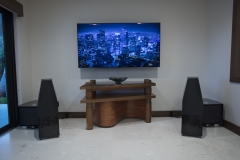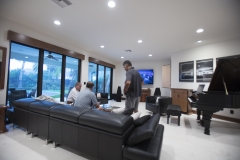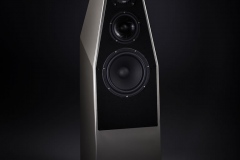Fascinating Transformation in a listening room that sounded noticeably less than excellent, on the first go around!
I learned so much from the experience and from Ed Masterson as we (Ed, Miguel and I) began conversion of this room, set up the gear in the room, mildly acoustic treated the room, tested this room and got so-so results in Round 1 of this room. And then there was Round 2…
THINK ABOUT THAT FRUSTRATION WHEN YOUR MUSIC LISTENING ROOM DOESN’T SOUND RIGHT. OR WHEN ANY PROJECT DOESN’T APPEAR TO GO RIGHT. WHEN YOU JUST KNOW (or at least hope) IT COULD BE OR SOUND BETTER!
So, the purpose of this story (Part 1 and 2), is to share an experience about how a listening room that sounded quite horrible at first came around to one of Audiophile excellence. And how a willingness to explore, experiment and be teachable through a bit of Audiophile Cross Fit and Persistence will grant you the rewards in the end of a phenomenal Audiophile Listening Room. Well, that and someone with a great deal of knowledge from Experience, Engineering and Audiophile Passion as that of Ed Masterson.
IN PART ONE WE STARTED OFF WITH:
I CAN’T GET THE MUSIC TO SOUND RIGHT IN THIS ROOM!
See Part One here, please see the blog post here.
So to recap from where we left off in Part One:
We did finally get the room tuned in on the South wall with the Wilson Audio Tune Tots speakers, with the NAD M10 Streaming Amplifier and the REL Acoustics T7i Sub-woofer pair to fill in on the base High Level (not LFE), as the t7i’s do go down to 30 hz. The room sounded fairly good with all the gear setup on the South wall of “The Office”. But not great.
So, Ed Masterson canceled our event (our Annual Music Appreciation Event), and decided to experiment with the room some more.
Part Two – How Ed Transformed the Entire Listening Experience in our new “The Office” Listening Room
What would make someone take a nicely set up listening room, that sounds decent, has a nice visual appeal, and then completely redo the room like a wrecking ball?
Someone with a lot of passion and I’ll even toss in the word pride, for how his listening rooms sound when completed. Be it a customer’s home, or one of Ed’s and Our listening rooms in our Audible Images showroom, Ed just wants to get it right. (See Ed’s approach on our AV Dream Designs page here and the YouTube Testimonial & Approach video here.)
So maybe it was the following weekend after we got the pseudo-tuned room completed that Ed decided to re-arrange. The room is like 11 ft x 10 ft, and now the equipment would be moved to the 11 foot wide East wall, from it’s former position on the south wall.
It’s actually a much more beautiful view having the gear all placed against the East wall of the room. It’s a very tropical and artsy feel around here anyhow (our showroom is in what is called the “Eau Gallie Arts District” or EGAD, an area in Melbourne of antiquity and fine art), with some really stunning estates across the street. And if you really know to look for it, you can see the Indian River through a little corner in the upper right of the neighbor’s property across the street. Occasionally you can even see sailboats anchored in the water behind the house. I’m getting off on a tangent here 🙂
Back on point, the move did give us a few more inches of breathing room (about 6 more inches on ea. side) for the speakers. Ed set up the same gear, the Tune Tots, M10 and the REL T7i’s with the high level connection. (Note: REL Acoustics provides a very unique, easy to setup, 3 pre-stripped wire connection to the speakers with the Speak-on connectors on the other end that go into the high level connection on the back of the subs, specifically for 2 channel listening. They also have an LFE connection for a surround setup)
Ed did all this over the weekend.
When I came in on Tuesday, to say I was blown away would be an understatement. The base was clean, fast, we had a great soundstage, the tonal balance, perspective, were all good and most of all, the listening experience had you melting into total voluntary aural submission in the chair.
Over the next week, Ed did some fine tuning with the room, not to much more of moving gear around, maybe a little, but then he focused on adjusting & lowering some of the wall art canvas pictures to tighten up not so much the base now, but more on getting an even clearer audio image of the different instruments in the mids and highs.
The room was now ready for our Music Appreciation Event.
Experimentation with Additional Amplifiers and Speakers
Over the next month we started experimenting with a number of speakers and amplifiers, and following the NAD M10 success, we then brought in the Parasound Hint 6 integrated amplifier (a nice sounding piece with versatility too) to hear with the Tots. Very nice.
Then we brought in the Dan D’Agostino Momentum Integrated Amplifier (which if you have never heard one, is well worth a 100 mile drive to just come hear) and we began to discover that this room, this ridiculously small room was actually quite astounding sounding. The Tune Tots with the D’Agostino Integrated Amplifier and the REL T7i’s for bottom end sounded absolutely amazing. We then moved the NAD M10 and Tune Tots into our front showroom so folks could hear it out there when they first walked in the door. Not because we were kicking them out of the room. We were on a high, just blown away with how good this room was now sounding. You could say we were in tunnel vision just to hear all the possibilities of this room.
Then we started testing the Wilson Audio Sabrina’s with no subs. There was actually not enough room for subwoofers beside the Sabrinas. I heard someone say, that the Sabrina’s, with the dCS Rossini DAC & Player and the D’Agostino Integrated was kind of overkill for this room. And he was probably right, lol. But it sure was fun finding out that we could put Wilson’s smallest floorstander in this room and hear that Wilson time alignment magic force you into a semi catatonic drooling a little bit listening state 🙂
Now it was time to give the room a Sonus Faber makeover. We setup the Sonus Faber Sonetto III’s paired with the REL T7i’s, and yes, that sounded excellent. But I believe the anxious moment was to hear the Olympic Nova I’s in the room, and paired with the REL T7i’s. They sounded quite awesome, and we also decided, (well Ed decided) that the Olympica’s needed a more closely matched bottom end partner. The T7i’s are excellent, but they are modest priced subs, and an upgrade in subwoofer was needed to match the lower bass and quickness that one would expect with a higher end sounding speaker as the Olympica Nova I’s.
I know I need to close out this article but I have to share a couple other discoveries of what could be done with this mere closet size of a listening room. 🙂
So, Ed decided that an appropriate upgrade in subwoofers for this two channel setup was a pair of REL S/510’s, and that is when I believe we hit Nirvana (and that is a word I do not use).
OMG, the sound of the Olympica Nova I’s was as good in analogy as the entire Visual and Audio culture that Sonus Faber creates with their speakers in how they are designed to look (lute shaped) and sound like the famous violins made in Italy. Those Olympica speakers that we knew were magical when we tested them out during a demo from Woody our Sonus Faber & McIntosh rep, even though the room itself sounded horrific back then, paired with the newly arrived REL S/510’s matched with the D’Agostino Momentum Integrated Amp and the dCS Rossini DAC & Player was just flat out beautiful to the ears.
You have got to come in to hear this room and these audiophile magnifico speakers. I’m in one of those justified moods using over the top hyperbole.
Lastly, this past Friday, we had our Olympica’s out on loan to a friend, and I asked Ed if we could setup the Sonus Faber Guarneri’s in the new location. I laugh, thinking back as to how bad they sounded placed on that south wall a few months ago. The muddiness that was unacceptable to even someone who hates listening to music. Now with the Guarneri’s on the East wall, we haven’t even connected the REL Acoustics S/510’s yet. (And we almost always have REL subs connected to 2 channel listening, because it allows you to literally hear all the music the artist intended) We got the Guarneri’s setup, roughly tuned in, no subs, just Sonus Faber Guarneri’s on stands.
The result was a Reward of Irony. The Guarneri’s sounded absolutely beautiful. The tonal balance was just right and the spaciousness of vocals, piano, saxophone had a bloom so clean and layered you couldn’t help but smile, and the images were very focused and crisp. And the base was very good, no mud, just appropriate quick accurate base.
An excellent Audiophile experience of Italian excellence. I mean, everything sounded special in this new room. And this combination of gear and placement which included the Guarneri’s, D’Agostino and Rossini (even though it’s made in England, it sounds Italian 🙂 , is a culmination of effort that provided us smiles.
Come in to hear it. Just Enjoy the Music.
Moral to the story, if it doesn’t work the first time, try again. If it doesn’t work the 2nd time, Call Ed…
Thank you for stopping bye.
Please see the photo gallery below of our progressive experimentation in “The Office” listening room.
The Office Transformation Gallery
Detailed Summary of Lessons Learned Bullets
- I will be expanding on these bullets in the future. I am anxious to get this story live, but I’ll be back to expound upon what Ed did to transform a room from Dud to Dynamic.
- Go and Listen to a couple of Listening Rooms like in our showroom to establish a “Reference” of what excellent sound is and can be. So that you will know what to strive for based on your budget and listening preferences
- Don’t get stuck on your first or even second room configuration or layout. Sometimes issues may exist that you are unable to see or notice early on.
- Speaker placement. (will be covered here)
- Almost a necessity for Subwoofers to be added for two channel listening
- Room Dimensions and Approach
- Knowing how to describe what you’re hearing
- Acoustic Treatment, how to approach it and how it refines but not necessarily defines how your room will sound
- Matching Gear correctly
- Asking for help
NOTE: This bullet list I am going to come back to and not only add the details it, but also refine it. I just wanted to get Part II published and out the door, because it was just so amazing to hear and experience.
We enjoy being your go to source for all Your High Performance to Ultra High End Home Stereo two Channel systems, Modest to Ultra High End Home Theater home entertainment systems. We also enjoy Audiophiles just dropping in to talk the hobby, ask questions and even pick Ed Masterson’s brain on questions about your system and also about used and pre-owned gear sales, including in which we are also an authorized Audiogon Dealer, to help move your former gear as you pursue upgrading thoughts that you may have now or on down the road.



